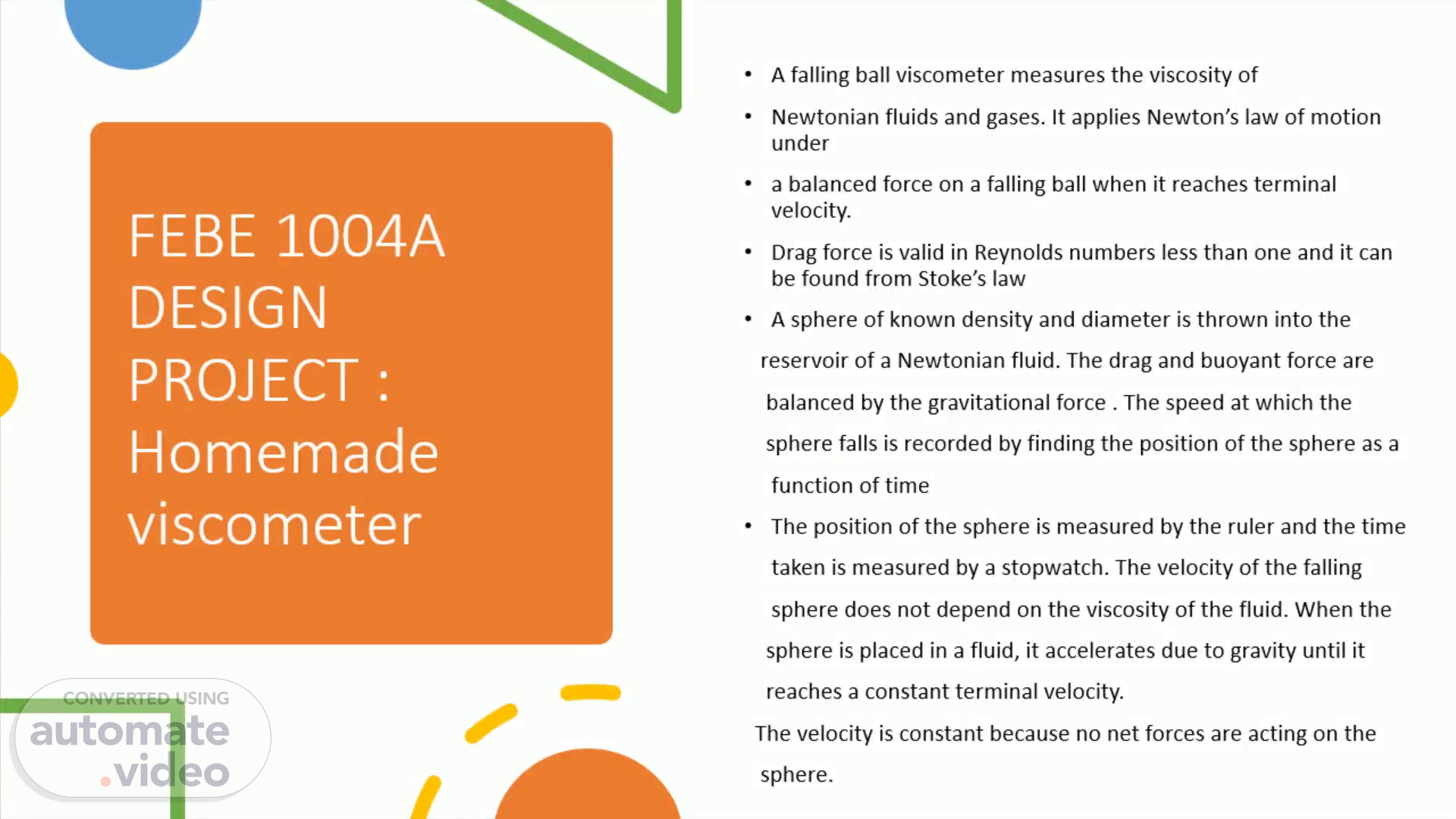
FEBE 1004A DESIGN PROJECT : Homemade viscometer
Scene 1 (0s)
FEBE 1004A DESIGN PROJECT : Homemade viscometer. A falling ball viscometer measures the viscosity of Newtonian fluids and gases. It applies Newton’s law of motion under a balanced force on a falling ball when it reaches terminal velocity. Drag force is valid in Reynolds numbers less than one and it can be found from Stoke’s law A sphere of known density and diameter is thrown into the reservoir of a Newtonian fluid. The drag and buoyant force are balanced by the gravitational force . The speed at which the sphere falls is recorded by finding the position of the sphere as a function of time The position of the sphere is measured by the ruler and the time taken is measured by a stopwatch. The velocity of the falling sphere does not depend on the viscosity of the fluid. When the sphere is placed in a fluid, it accelerates due to gravity until it reaches a constant terminal velocity. The velocity is constant because no net forces are acting on the sphere..
Scene 3 (42s)
Prototype design.
Scene 4 (1m 9s)
Calibration. The reservoir was filled with water, the ball was put carefully, and more water was added until there were no bubbles. 2) The reservoir was turned upside down to uniformize the temperature. 3) After altering the bath temperature, the liquid temperature was allowed to stabilize by waiting a few minutes. 4) After the investigation, the reservoir was emptied, and the ball was removed. The testing was done by placing the structure on a flat surface and adding water to the fluid reservoir and a 37°C water bath was used to test the accuracy of the viscometer at a constant temperature. To investigate the accuracy of the structure, 1) The sphere was placed close to the fluid reservoir, 2) The sphere was released, and the stopwatch was started immediately as the sphere reached the point marked on the reservoir, 3) As the sphere settles, its position was recorded as the function of time. The results obtained were recorded in tables and the procedure was repeated twice for each fluid for accuracy..
Scene 5 (1m 20s)
RESULTS. Table Description automatically generated.
Scene 6 (1m 43s)
Analysis and discussion. The theoretical value of the viscosity of water at constant pressure and temperature of 20 °C is 1.0016 millipascals. second. The value calculated from equation one above was found to be 1.00 millipascals. second which is closer to the theoretical value..
Scene 8 (3m 23s)
The End.